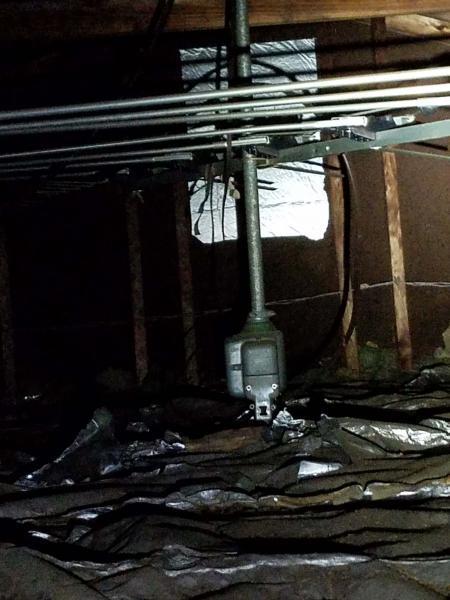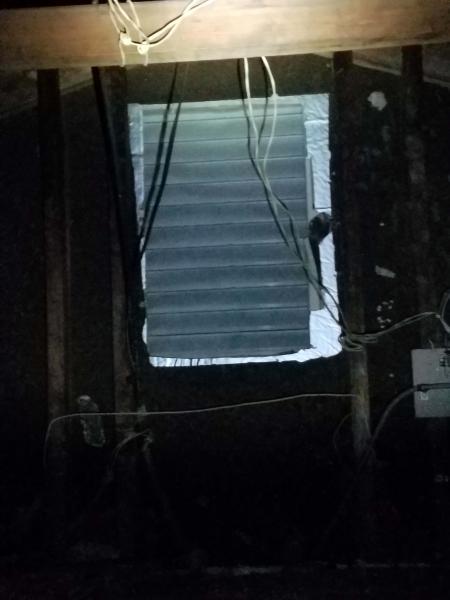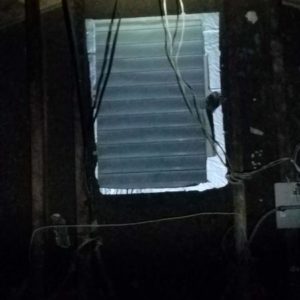Siding job from hell…
I had attic vents/louvers one on each side of the house.
One was replaced on one side with a new one. On the other side of the house, I discovered tonight they had removed the attic vent, boarded over it with Rmax Foam Board Insulation (apparently from the outer Logo), with no internal support behind it, and without my consent!
Now I’m not sure really that it needs support inside but seems possible to me since the dimension is a couple feet X a couple feet. Maybe the board is stiff enough. But if I were doing it I would have added some wood behind it. But I’m not a builder.
Fact is, the venting though asymmetric may not be an issue since the house recently had the roof redone with an new ridge vent.
1. Concerned is this going to be structurally ok?
2. Any other input regarding the venting?
3. RMax product looks commonly sold in the “home stores” ; off-gasing any issue in home. I mean safe to live in?


The job involved removing asbestos shingled siding from the entire house down to the studs. Then they apparently opted for this RMax product instead of Tyvek (their original quote was for Tyvek). They thought the installers preferred the insulation board (guess again in their best interest – a one step process instead of two?)




















Replies
Since it was structurally sound enough for the vent it will be fine without the vent. The application of the foarm board would be a little different and should have had at least one stud in the middle. Using foam board is better for you for the insulation value but will only be a vapor barrier if they taped the seams.
ridge vent or gable vents never both hack job repair but no loss of structure on gable end
You’re going to have to change or put a few more words in that post ......
smitch,
As makita888 says, you need soffit and ridge vents to get flow through the attic- a gable vent will just "short-circuit" to the ridge vent.
Structurally, the gable end is fine. You didn't describe the siding, but it almost certainly needs support more often than 2'x2', so a stud style nailer is needed, as florida suggested. You didn't note the Rmax thickness- it's probably just a thin wrapper (1/4"), but regardless, it won't hold nails or support the siding. I wouldn't worry too much about out-gassing unless you're sensitive to poly-isocyanurates
Tyvek isn't a significant vapor barrier (30+ perms) while Rmax is less than 1.5 perms. Taping the joints won't change the vapor transmission significantly. If the Rmax is thin (little insulation) you now have the possibility of condensation on the sheathing from internal moisture, depending on your climate. So, going from Tyvek to thin Rmax isn't a negligible change. Note this is a minor issue at the gable ends- if there are problems, it will be in the walls, between the sheathing and the Rmax.
OTOH, you mentioned removing the siding "down to the studs." Does that mean the only sheathing is the R-max? (If so, it's probably thicker than 1/4") There are forms of Rmax that are suitable for this type of application, but it sounds like you have the Devil's own siding crew- ignorant, evil or both, so I'd recommend that you get really pushy, ask for a lot of explaining and seriously consider finding a knowledgeable consultant.